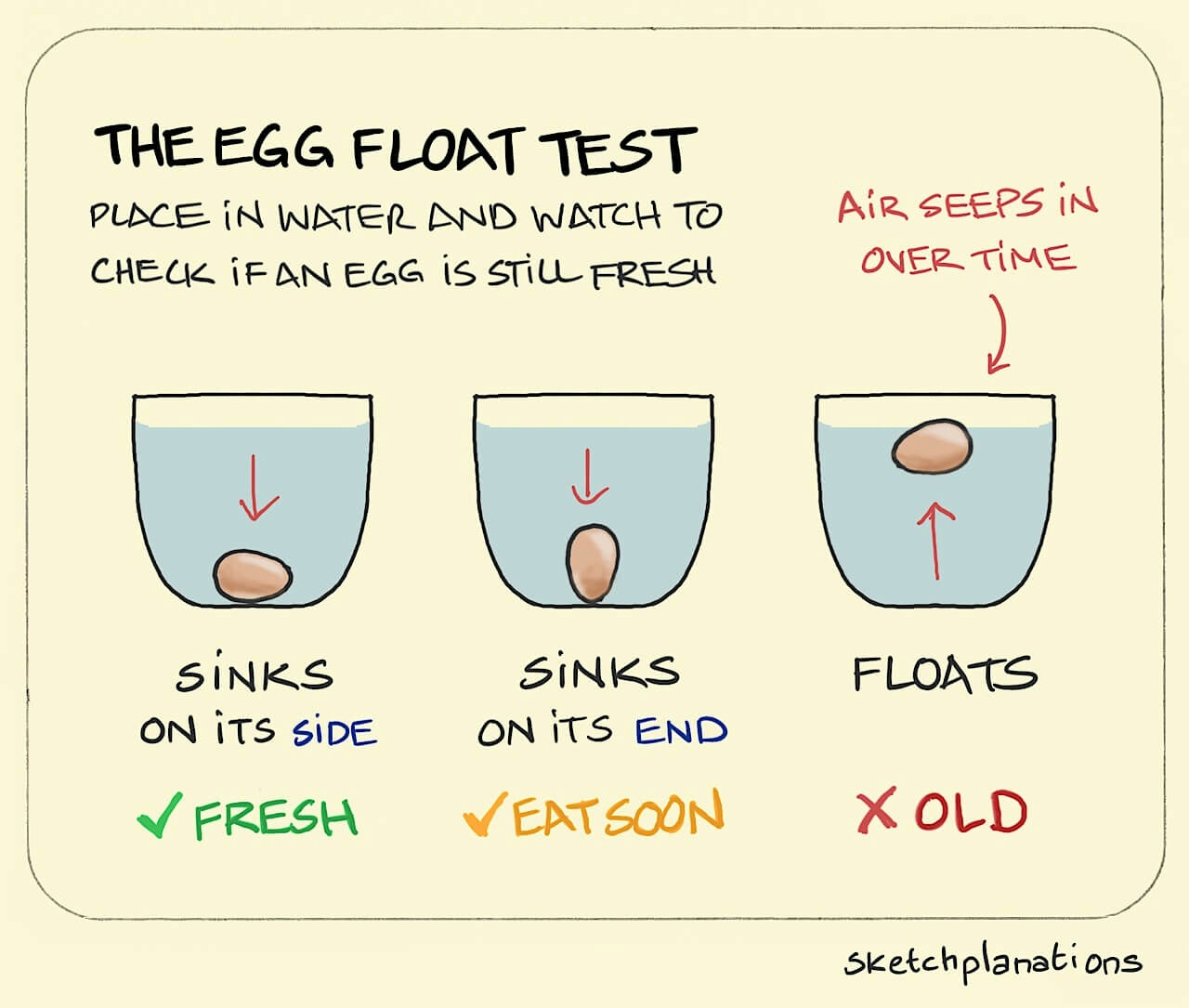The Egg Float Test

- Copied!
👇 Get new sketches each week
Together, and with the help of a small bowl of water, let’s save millions of perfectly good eggs from being thrown away using the egg float test. Egg shells are very slightly porous. Over time, air seeps into the shell making it lighter than it was, and, when it is old and no longer good to eat, it floats. Hence, the egg float test.
Here's how to test your eggs. Carefully, place an egg into water taking care not to crack it, and watch. If the egg:
- …sinks to the bottom and sits on its side, then it’s fresh and good to eat.
- …sinks to the bottom but perches on its end, then it’s good to eat, but should be eaten soon — it’s been around long enough to get enough air in it to start lifting it off the bottom.
- …floats to the surface, then it’s old and likely no longer good to eat.
Word is that it’s not a good idea to wash eggs well before you plan to use them as it removes a natural membrane coating on them called bloom that protects the eggs from bacteria. So best to only wash them when you’re ready to eat them.
Now, does anyone know of an equivalent test for avocadoes?

